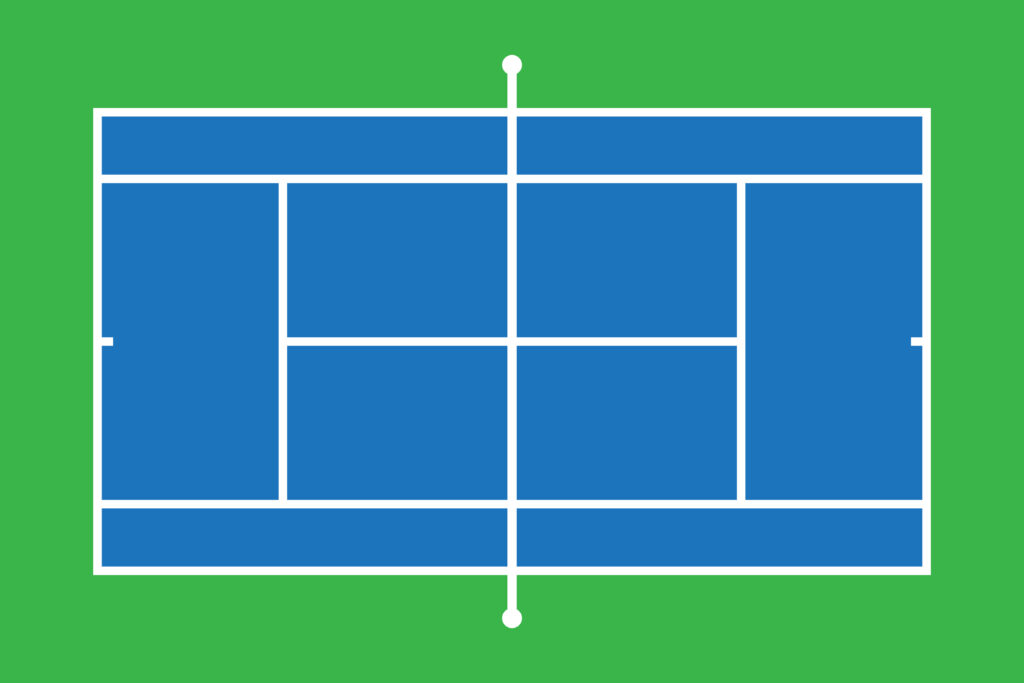
INTRODUCTION
The ultimate tennis court entails certain major issues for an investment worth its weight. The ins and outs of tennis court design and installation practices will also be fodder for you to make informed decisions with regard to durability, performance, and aesthetics, whether you’re designing a small backyard tennis court for the home or an all-out facility. This guide will navigate you through what you need to know: types of tennis court surfacing, installation costs, and ways of finding tennis court installers near me.
1. Surface Choice
The greatest and foremost decision relating to the design of the court is the selection of the surface of the tennis court. There are some pros for each surface; therefore, seating the right one really varies based on your geographical location, climatic conditions, or specific intended use or purpose.
Acrylic Tennis Court Surface: Considered among the most-wanted solutions for residential and commercial tennis courts, this surface would stand the test against almost all. Acrylic tennis court surfaces provide durability and reliable play with comparatively low maintenance, which appeals to homeowners looking to create a high-quality yet low-maintenance court. Pricing for acrylic tennis court surfaces varies depending on various court sizes and materials; generally, though, it is on the higher price range as compared to the other varieties.
Grass Courts: These offer a fast game with a unique bounce but require heavy maintenance and are more suited for cooler regions.
Hard Court Surface: Hard courts generally refer to those made from asphalt or concrete, both very durable and fast.
Every different surface will have special sets of advantages and disadvantages; hence, choose one that answers your needs.
2. Ensure the Correct Layout and Size
A small backyard tennis court can be a highly stylish addition to your home. However, ensure that the area you have set aside will fit the desired layout. The full-size tennis court measures 78 feet long with 36 feet wide for doubles play, with a recommended 12-foot safety clearance.
If there is room, a smaller version for recreational and practice purposes could be a solution. Such smaller courts, which are usually 36 by 18 feet, are rapidly gaining popularity in residential communities, giving you the ability to play within a miniature area. It is advisable to hire nearby tennis court contractors who can construct a court that will fit into your yard and according to your needs.
3. Proper Drainage and Subgrade Preparation
Proper drainage is the most critical consideration in the installation of a tennis court; if drainage is not done properly, surface water will accumulate, to cause cracks on the surface, erosion, and general damages to the court. The contractors will ensure that a proper sub-grade is prepared for tennis court surfaces such that the ground is level, compacted, and having proper drainage.
4. Hire Professional Tennis Court Contractors
Proper installation does matter for the longevity and correct functioning of a tennis court. To that end, tennis court installers who work near your location should have ample experience in the design and installation of tennis courts. After an experienced contractor surveys your property and makes material recommendations, the contractor will take you through the whole process of tennis court installation-from excavation to surface installation.
Always check review ratings, previous work, and licenses before hiring a contractor. First-time-installation perfection of your courts is key for long-term durability.
5. Lighting and Fencing for Security and Aesthetic Purpose
If there are players at night or for the sake of extra secrecy, tennis court lighting has to be given consideration. Lights strategically put will ensure that the court is illuminated without the glare, thus enabling play at night. Lighting can also be an aesthetic element to enhance the property’s worth at your site.
Fencing is yet another consideration for tennis courts. An inspiring fence ensures safety and privacy and stops balls from rolling off during a game. There are different kinds of fencing materials from which to choose: chain link, vinyl, and ornamental metal, depending on your choice and budget.
6. Look for Maintenance
Acrylic tennis court surfacing materials, however, require minimal maintenance; yet, scheduled maintenance must be carried out to keep surface conditions in good order. This includes dusting out all debris, sealing minor cracks, and resurfacing in intervals after a few years.
7. Be Aware of the Expenses
The overall cost of your tennis court will be determined by a number of aspects, including its size, the material of the surface, and the type of location. Generally, an acrylic tennis court surface for a standard-sized court can vary from $30,000 to $60,000, depending on the quality of workmanship and materials used.
The costs for a small backyard tennis court would be slightly lower, especially if you select a conventional surface like asphalt or artificial turf. You should obtain at least a few estimates from construction companies and include the costs of accessories such as fencing, lighting, and drainage systems.
Conclusion
Careful planning, correct selection of tennis court surfaces, and professional installation will go into setting up a tennis court. Right materials, proper drainage, and hiring professional tennis court contractors near me will be rewarding for any investment put in for either a small backyard tennis court or a full professional one for decades to come. Do not forget the continuity of maintenance and care, as it will give you the court to enjoy for years of exciting tennis matches!
Following these best practices for tennis court installation and design, you will soon have a tennis court of the highest quality, filled with great functionality and beautiful aesthetic appeal, that will please your game as well as your property.